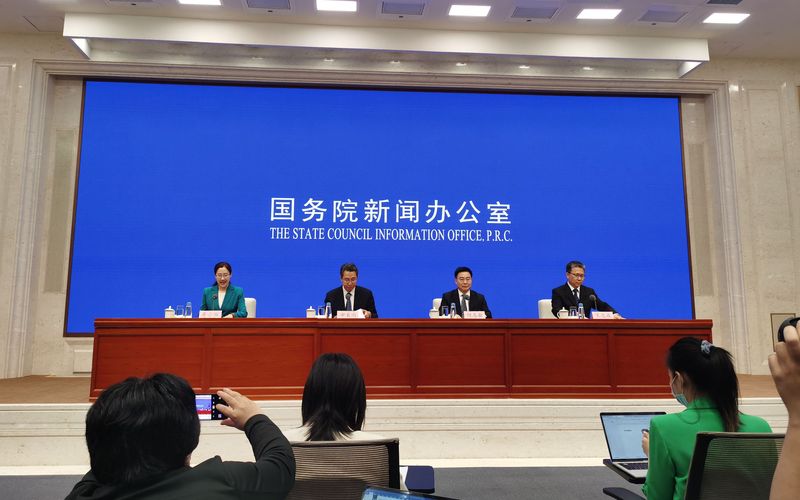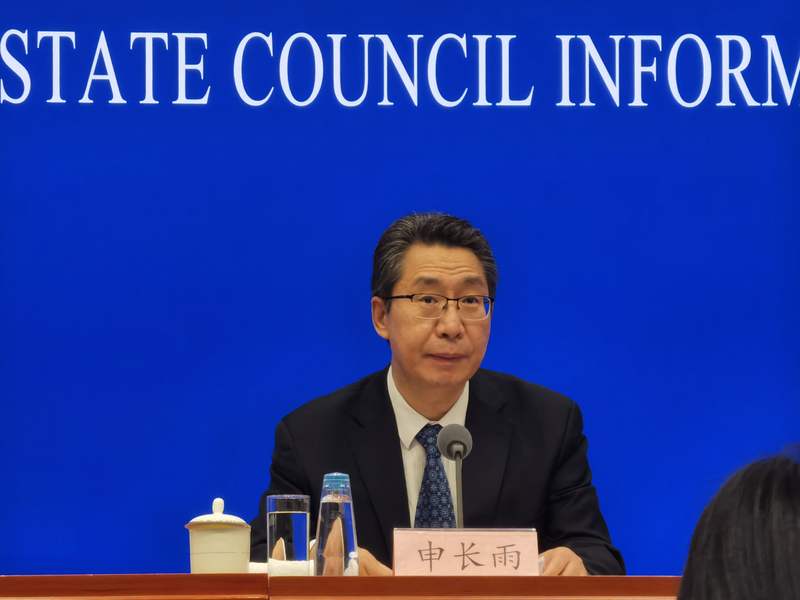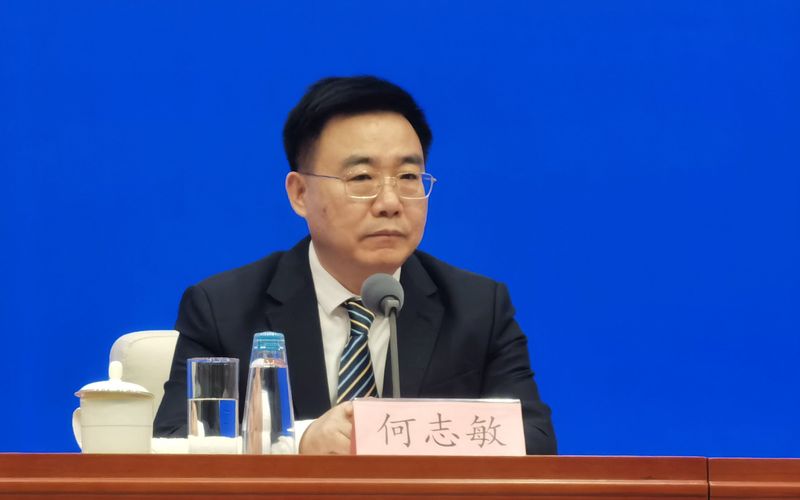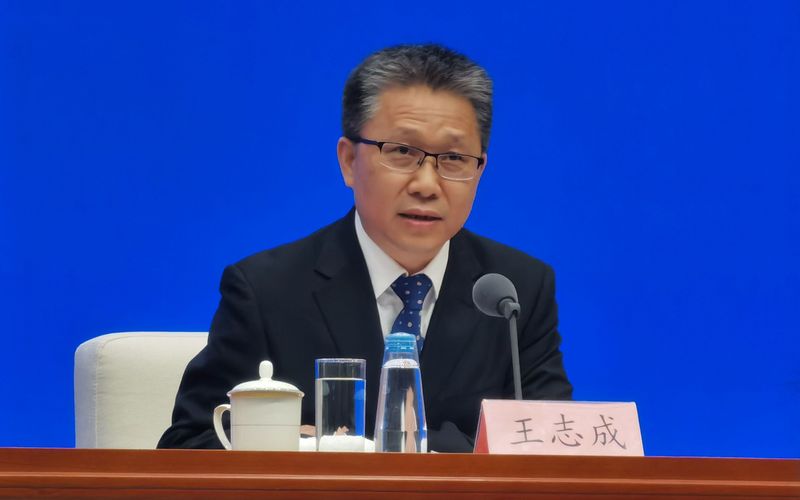Protect innovation and crack down on malicious registration of trademarks. Read the current situation of intellectual property protection in China.
April 26th is World Intellectual Property Day. The State Council Office held a press conference today on the status quo of intellectual property protection in China in 2021. According to Shen Changyu, Director of China National Intellectual Property Administration, in the Global Innovation Index Report 2021 released by the World Intellectual Property Organization, China ranked 12th in the world, which has been steadily improving for nine consecutive years.
In 2021, a total of 696,000 invention patents were authorized, and the number of high-value invention patents per 10,000 population reached 7.5, an increase of 1.2 over the previous year. Chinese applicants filed 69,500 international patent applications through the Patent Cooperation Treaty (PCT), ranking first in the world for the third consecutive year.
The report of the 19th National Congress of the Communist Party of China proposed to strengthen the creation, protection and application of intellectual property rights. Shen Changyu introduced that in the past five years, 2.531 million invention patents have been authorized, with an average annual growth rate of 13.4%; A total of 27.705 million registered trademarks were registered, with an average annual increase of 29.0%. The registration of copyright, new plant varieties and integrated circuit layout design has also reached record highs.
The principle of intellectual property protection is written into the civil code. A new round of revision of the Trademark Law, Patent Law and Copyright Law was completed, and the highest international standard punitive damages system was established. The benefits of the use of intellectual property rights have accelerated. Relevant statistics and reports show that in 2020, the added value of patent-intensive industries will reach 12.13 trillion yuan, accounting for 11.97% of GDP, which has become an important support for high-quality economic development. The added value of copyright industry reached 7.51 trillion yuan, accounting for 7.39% of GDP. Among the 5,000 leading brands in the world, China accounts for 408, with a total value of $1.6 trillion.
China’s ranking in the Global Innovation Index Report released by the World Intellectual Property Organization rose from 22nd in 2017 to 12th in 2021, rising by 10 places, ranking first among middle-income economies and one of the fastest-growing countries in the world. In particular, it has performed well in a number of sub-indicators. The number of PCT international patent applications ranks first in the world for three consecutive years, and the proportion of intellectual property income in the total trade continues to increase. The number of science and technology clusters that have entered the top 100 in the world ranks second in the world, indicating that China is changing from a big country that introduces intellectual property rights to a big country that creates intellectual property rights.

At the press conference. Beijing News reporter Chen Lin photo
Concern 1
How to protect data property rights?
Data is called the new energy in the information age, and it is the basis of the development of digital economy, alongside traditional elements such as land, capital and technology. China is a big country in data resources and digital economy. In 2020, the added value of digital economy supported by data has reached 39.2 trillion yuan, accounting for 38.6% of GDP, ranking second in the world.
Shen Changyu said that in order to make these data resources flow reasonably, make full use of them and protect them effectively, it is necessary to solve the property right problem of data well and improve the relevant system design. The Outline of Building a Powerful Country with Intellectual Property Rights (2021-2035) and the Tenth Five-Year Plan for National Intellectual Property Protection and Application both make arrangements for the construction of data intellectual property protection rules, requiring the implementation of data intellectual property protection projects and in-depth theoretical and practical research.

China National Intellectual Property Administration director Shen Changyu. Beijing News reporter Chen Lin photo
China National Intellectual Property Administration is accelerating the related research work in combination with departmental functions and work practice, and has set up a special work class.
He said that the protection of data property rights should adhere to safety first and development first, and give full consideration to data security, public interest protection and personal information protection; It is necessary to fully grasp the unique attributes of data and the development law of property rights system, realize the high consistency between data protection mode and data resource characteristics, and organically unify data property rights protection and effective data utilization; We should fully respect the creative labor and capital investment of data processors and recognize and protect the reasonable income of data processors; To facilitate the flow and transaction of data, it can promote the prosperity of the data market, expand the digital industry, promote the digital transformation of the industry, and support high-quality economic development.
At present, China National Intellectual Property Administration has carried out pilot projects of data intellectual property protection in Zhejiang, Shanghai and Shenzhen, striving to obtain replicable and popularized experiences and practices in legislation, deposit and registration, and providing practical basis for subsequent system design. Among them, Zhejiang has established a public depository platform for data intellectual property rights, and started to provide depository services for market participants.
Concern 2
How to combat malicious trademark registration?
He Zhimin, deputy director of China National Intellectual Property Administration, said that China National Intellectual Property Administration has always maintained a high-pressure situation of cracking down on malicious registration of trademarks, focusing on special actions to crack down on malicious cybersquatting of trademarks. Last year, a total of 482,000 malicious registered trademarks were cracked down in the trademark review procedure, including 60,400 malicious hoarding trademarks and 1,628 malicious registered trademarks that harmed the public interest.

He Zhimin, Deputy Director of China National Intellectual Property Administration. Beijing News reporter Chen Lin photo
In the trademark objection review procedure, 30,000 malicious registered trademarks were cracked down. In the follow-up procedure, 1,729 trademarks were voluntarily declared invalid ex officio, and the number of trademarks voluntarily declared invalid ex officio was five times the sum of the past 10 years. Under the shock of high pressure, some illegal workers voluntarily gave up their maliciously registered trademarks. For example, 30 interrelated trading companies in Jiujiang took the initiative to cancel more than 2,200 maliciously registered trademarks under their names.
Since the beginning of this year, China National Intellectual Property Administration has continuously cracked down on the malicious registration of trademarks. With the attitude of "zero tolerance", we will accurately crack down on 10 typical behaviors that violate the principle of honesty and credit, violate public order and good customs, seek illegitimate interests and disrupt trademark order by strengthening rectification key points, monitoring and early warning, system governance, agency supervision, credit supervision and coordination, and actively safeguard the legitimate rights and interests of market participants and social public interests. In the first quarter of this year, 12,200 malicious hoarding trademarks were rejected in the review process, 1,628 malicious registered trademarks were rejected, and 707 were declared invalid voluntarily. And in two batches, 1,742 trademarks, their applicants and agencies involved in the malicious squatting of the Winter Olympics and Paralympic Games were notified and exposed.
Concern 3
What has been done to promote the legislation of geographical indications?
He Zhimin introduced that there are two modes of protection of geographical indications in China: trademark protection and special protection. Trademark protection is mainly based on the trademark law and its implementation regulations, as a collective trademark or certification trademark for protection; The special protection is mainly based on the Regulations on the Protection of Geographical Indications Products.
After the institutional reform in 2018, China National Intellectual Property Administration was re-established to be responsible for the unified authorization and protection of geographical indications, and has basically achieved unified identification and release. On this basis, starting from the legal system, China National Intellectual Property Administration has made overall consideration of the two modes of trademark protection and special protection of geographical indications, carried out in-depth thematic argumentation, studied the convergence and coordination scheme, accelerated the unified legislation of geographical indications, and promoted high-quality development in the field of geographical indications.
He introduced that on the basis of strengthening research, a legislative framework and draft proposals for unified legislation will be formed, the rights and obligations of relevant subjects and the responsibilities of management organs will be clarified, and the procedures for authorizing and confirming geographical indications will be improved; Actively promote the use of geographical indications, focus on promoting regional brand building and the development of local characteristic industries, and improve the unified protection system in which special protection and trademark protection are coordinated. At the same time, we should actively learn from the experiences and practices of geographical indication protection in other countries, realize the organic connection between the protection of geographical indications in China and those in other countries, and provide legal support for promoting economic and trade cooperation.
Concern 4
How to improve the pattern of intellectual property protection?
It is an important construction goal of the modernization of market supervision to build a pattern of intellectual property protection and stimulate the innovation vitality of various market subjects to the maximum extent. In response to a reporter’s question from the Beijing News, Shen Changyu introduced that last year’s Central Economic Work Conference clearly stated that it was necessary to strengthen the protection of intellectual property rights and create a good environment for enterprises of various ownership systems to compete for development.
Because intellectual property rights involve many types, and the protection work involves many aspects and links, it is difficult to protect all types of intellectual property rights with a single model, and it is also difficult to protect all links with a single means. In this regard, the General Secretary of the Supreme Leader specifically emphasized that intellectual property protection is a systematic project, covering a wide range of fields and involving many aspects. It is necessary to comprehensively use various means such as law, administration, economy, technology and social governance to improve the protection system from the aspects of examination and authorization, administrative law enforcement, judicial protection, arbitration and mediation, industry self-discipline, and citizen integrity, so as to strengthen coordination and build a big protection work pattern.
He introduced that China National Intellectual Property Administration has done a lot of work in building a pattern of intellectual property protection. Including strengthening the connection between administrative protection and judicial protection, cooperating with the Supreme People’s Court, promoting the organic unity of examination and confirmation standards, infringement judgment standards, administrative law enforcement standards and judicial judgment standards, and establishing online appeal adjustment and docking mechanisms, technical fact finding mechanisms and data resource sharing mechanisms; Establish a normalized contact and information sharing mechanism with the Supreme People’s Procuratorate to strengthen business support and case handling cooperation; Jointly promote the experience and practice of administrative adjudication of patent infringement disputes with the Ministry of Justice; Jointly issue opinions with the Ministry of Public Security on strengthening intellectual property protection; Jointly carry out inspection and assessment of intellectual property protection with Publicity Department of the Communist Party of China and the General Administration of Market Supervision; Together with the General Administration of Market Supervision, we have carried out special actions for the protection of intellectual property rights in the Winter Olympics and achieved good results. Taking the intellectual property protection of Beijing Winter Olympics as an example, the "ice pier" protected by patents, trademarks, copyrights and Olympic symbols continues to sell well, and "one pier is hard to find", which not only reflects the great success of Beijing Winter Olympics itself, but also reflects the great progress of intellectual property protection in China.
In addition, China National Intellectual Property Administration will promote the construction of a broader and deeper pattern of intellectual property protection, strengthen inter-departmental coordination and linkage between bureaus, provinces and cities, close cross-regional law enforcement cooperation, strengthen online and offline integrated protection, form a working situation of full-chain intellectual property protection, enhance the system protection capability, optimize the market environment and business environment, and maximize the vitality of various market players.
Concern 5
What impact will the implementation of Marrakesh Treaty have on visually impaired people?
Wang Zhicheng, Director-General of Copyright Administration of Publicity Department of the Communist Party of China, introduced that the full name of Marrakesh Treaty is Marrakesh Treaty on Facilitating the Access of the Blind, Visually Impaired or Other Printed People to Published Works. The treaty was adopted at the diplomatic conference held by the World Intellectual Property Organization in Marrakech, Morocco on June 27, 2013, and came into force on September 30, 2016. At present, there are 87 parties.

Wang Zhicheng, director of Publicity Department of the Communist Party of China Copyright Administration. Beijing News reporter Chen Lin photo
China signed the Treaty on June 28th, 2013, and was one of the first signatories of the Treaty. On October 23rd, 2021, the 31st session of the 13th the National People’s Congress Standing Committee (NPCSC) decided to ratify the Marrakesh Treaty. On February 5th this year, China deposited with the World Intellectual Property Organization the ratification of Marrakesh Treaty signed by the Chairman of the Supreme Leader. According to the entry into force rules, the treaty will enter into force for China on May 5th, 2022, three months after the submission of the ratification.
Marrakesh Treaty requires all parties to stipulate copyright restrictions and exceptions to ensure the equal enjoyment of works and education for people with dyslexia. It is the only human rights treaty in the field of copyright in the world so far. The beneficiaries of Marrakesh Treaty include not only visually disabled people, but also those who can’t read normally due to other reasons such as visual impairment, perceptual impairment or physical disability.
According to the results of the second national sampling survey of disabled people, there are about 17.32 million visually disabled people in China. The number of dyslexics in China may be more. After the entry into force of Marrakesh Treaty for China, it will greatly enrich the spiritual and cultural life of people with dyslexia in China, improve their education level, promote the overseas dissemination of excellent works in China, further enhance China’s right to speak and influence in the international copyright field, and show China’s international image of vigorously developing the cause of the disabled and fully respecting human rights.
He introduced that the National Copyright Administration will do a good job in the implementation of the Marrakesh Treaty, further improve the supporting mechanism, formulate practical implementation measures in China, strengthen the guidance and supervision of licensees, standardize the production and provision of barrier-free format versions of works, strengthen cooperation with the World Intellectual Property Organization and the Barrier-free Book Federation, promote the cross-border exchange of barrier-free format versions, and implement the support of the Marrakesh Treaty for people with reading disabilities.
Beijing News reporter Chen Lin
Editor Tang Zheng proofreads Sissi.